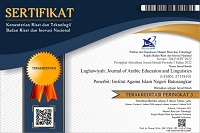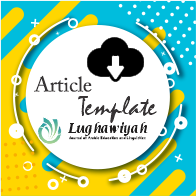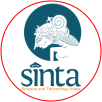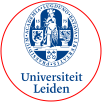ANALYSIS OF DILALAH TASHAWWURIYYAH (CONCEPTUAL METHAPOR) IN THE AL-QUR'AN SURAH YASIN / ANALISIS DILALAH TASHAWWURIYYAH (METAFORA KONSEPTUAL) DALAM AL-QUR'AN SURAH YASIN
Abstract
Keywords
Full Text:
PDFReferences
Ali, A & Muhḍor, A. Z. (1996) Al-Qāmūs al-’Aṣrī. Yogyakarta: Yayasan Ali Maksum Pondok Pesantren Krapyak.
Al-Khuli, M. A. (2001) Ilmu Ad-Dilalah; ‘ Ilmu Al-Ma’ na’. Amman: Dar al-Falah.
Amaruddin, D. Y. (2016). Living Qur’an: Tradisi Yasinan Masyarakat Desa Tualang Kabupaten Langkat, Medan, Sumatera Utara. Syahadah: Jurnal Ilmu Al-Qur’an dan Keislaman, 4(2). https://doi.org/10.32495/.v4i2.118
Amin, N. (2021) Semantik-Pragmatik Bahasa Arab (Kajian Al-Qur’ an melalui analisis relasi struktur linguistik dan konteks dalam pelaksanaan kalimat imperative). Solok : Insan Cendekia Mandiri.
Anis, I. (1984). Dilâlah al-Alfadzh, Mesir: Maktabah al-Anjilu al-Mishriyyah.
Ardiansyah, B., Purnanto, D., & Wibowo, A. H. (2020). Gaya Bahasa Bentuk Metafora Konseptual Dalam Novel Garis Waktu Karya Fiersa Besari. Atavisme, 23(1), 117-133. https://doi.org/10.24257/atavisme.v23i1.629.117-133
Aulia, Z. N. & Nur, T. (2020). Metafora Konseptual dalam Rubrik Unak-Anik Kahirupan Majalah Online Manglé: Analisis Semantik Kognitif. Lokabasa, 11(2), 226-236. https://doi.org/10.17509/jlb.v11i2
Bahri, S. (2016). Peran Al-Siyaq (Konteks) dalam Menentukan Makna. Ittihad, 14(26), 86-98. https://doi.org/10.18592/ittihad.v14i26.875
Cortés de los Ríos, M. E., & Fernández Alonso, P. M. (2017). A multimodal analysis of cognitive tools portraying terrorist affairs. Revista de Lenguas Para Fines Específicos, 2, 359–382. https://doi.org/10.20420/rlfe.2017.350
Citraresmana, E. (2011). Kajian Metaforis Konstruksi Middle Passive Bahasa Inggris: Satu Pendekatan Semantik Kognitif. Indonesian Journal of Dialectics, 1(3).
Ghoffar, M. A. (2005). Terjemah Tafsir Ibnu Katsir. Bogor: Pustaka Imam Syafi’i.
Haley, M. C. (1980). Linguistics Perspective on Literature. London: Routledge & Kegan Paul.
Hasan, T. (2002) Al-Lughah wa al-Dalalah fi al-Qur'an al-Karim. Lebanon: Dar Al-Nahda Al-Arabiyya.
Haula, B. (2020). Metafora Konseptual dalam Judul Berita Kontan.co.id: Kajian Semantik Kognitif. Suar Betang, 15(1), 15-23. https://doi.org/10.26499/surbet.v15i1.118
Hayat. (2014). Pengajian Yasinan sebagai Strategi Dakwah NU dalam Membangun Mental dan Karakter Masyarakat. Walisongo, 22(2).
Hidayatullah, S. (2017). Al-‘ Arabiyah: Cakrawala Linguistik Arab. Jakarta: Gramedia Widiasarana Indonesia.
Kövecses, Z. (2010). Metaphor: A Practical Introduction. New York: Oxford University Press-Inc.
Kridalaksana, H. (2008). Kamus Linguistik. Edisi Keempat. Jakarta: PT Gramedia Pustaka Umum.
Lakoff, G., & Johnson, M. (1980). Metaphors We Live. Chicago: The University of Chicago Press.
Mahmud, F. (2022). Pendekatan Kontekstual dalam Tafsir Al-Qur’ an. Bengkulu : El-Markazi.
Mahsun. (2014). Metode Penelitian Bahasa (Tahapan Strategi, Metode, dan Tekniknya) (Edisi Revisi). Jakarta: Rajawali Press
Nurhidayanti, N. (2020). Eskatologi Dalam Padangan Hassan Hanafi dan Fazlurrahman (Studi Komparatif Epistemologi Ilmu Kalam). Kontemplasi: Jurnal Ilmu-Ilmu Ushuluddin, 8(1), 104-126. https://doi.org/10.21274/kontem.2020.8.1.104-126
Pirmansyah & Nur, T. (2021). Metafora Konseptual dalam Al-Qur’an Surat Yasin: Kajian Semantik Kognitif. Jurnal Perspektif, 5(2), 146-160. http://dx.doi.org/10.15575/jp.v5i2.126
Saeed, J. (2003). Semantics. Oxford: Blackwell Publisher Inc.
Sudaryanto. (2018). Metode dan Aneka Teknik Analisis Bahasa. Yogyakarta: Sanata Dharma University Press.
Taufiquttachman. (2008) Leksikologi Bahasa Arab. Yogyakarta: UIN Malang Press.
Umar, A. M. (1998). Ilm al-Dalâlah. Kairo: Alam al-Kutub.
Zakiyah, S. N. & Nur, T. (2021). Ungkapan Metaforis Teks Terjemahan Bahasa Sunda dalam Surat Al-Baqoroh: Kajian Semantik Kognitif. Literasi, 11(1), 18-29. https://doi.org/10.23969/literasi.v11i1.3512
DOI: http://dx.doi.org/10.31958/lughawiyah.v5i2.11584
Refbacks
- There are currently no refbacks.

This work is licensed under a Creative Commons Attribution-NonCommercial 4.0 International License.
Lughawiyah Indexed By:

Lughawiyah distribute under Lisensi Creative Commons Atribusi-NonKomersial 4.0 Internasional.
View My Stats lughawiyah




















